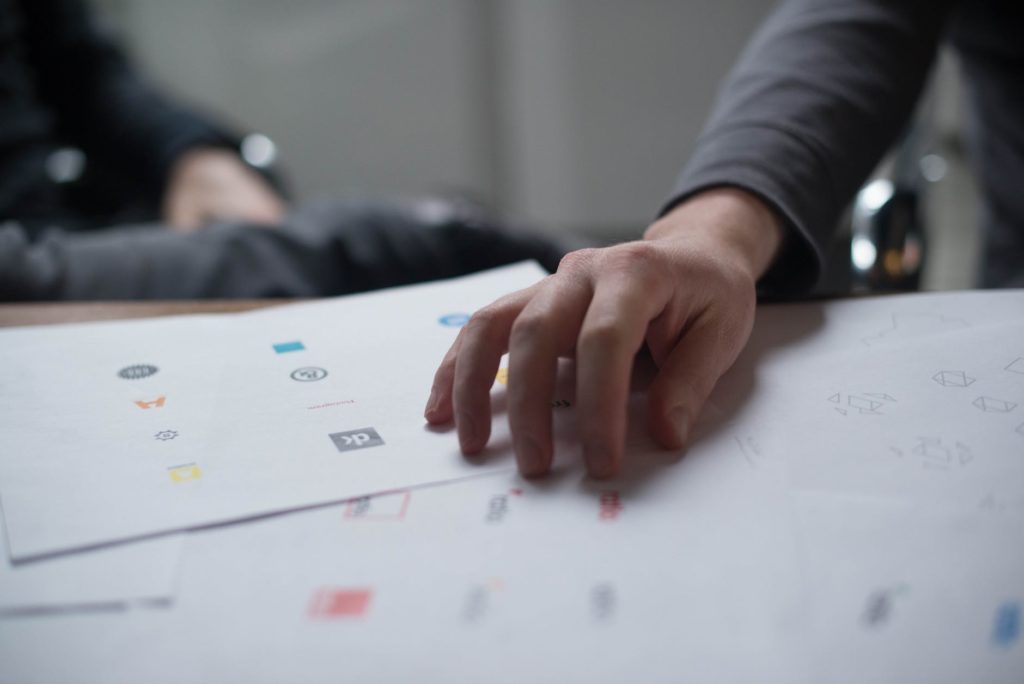It should go without saying that every business needs a logo. It should also be obvious that the better the logo, the greater the benefit it can provide to a business. With so much riding on it, you would think that every company would take it very seriously.
Unfortunately, many business owners are content to just have a business card company or graphic designer choose a common font and spell out their name or settle for the first thing their nephew’s friend’s brother pitches them.
Your logo is your brand’s identity, and its design deserves as much, if not more thought than the company’s name itself. Fortunately, a few simple questions can point you in the right direction.
We’ll look at how the answers to the following questions can steer you towards an effective design:
Is it timely?
Is it simple? Does the style match my brand? Is it versatile?
4 Qualities Small Business Logo Must Have

1. Timeliness
Some company’s logos are stuck in a different era. That may be because they were designed in a different decade and were never updated.
While it’s true that the best logos are completely timeless, designing something that changes with the times is very difficult to do without a great deal of luck.
It is far better to analyze the design trends of the time and either follow them or do the complete opposite to stand out. If you are working with a reputable graphic designer or advertising agency, they’ll likely understand that.
If you aren’t working with that kind of budget, however, there has never been a better time to find logo design makers online that can help customize a mark to fit your brand.
In order to have and create a truly timeless logo for your business, be sure to take into consideration the trends of the time. In many cases, these trends can hinder the usefulness of your logo in the future.
For many designers, looking back at the past and seeing what logos have stood the test of time help them to understand what to put into a logo that will last the next fifty or hundred years.
Some trends will go out of style in just a few years, so it’s always important to look at what things other brands have done that have been either very successful or complete flops.
2. Simplicity
Think about the most iconic logos in advertising. The Nike “swoosh.” The Amazon “arrow.” The Apple…well, “apple.” These logos all share the enviable design trait of simplicity. They are instantly recognizable and require no explanation, which at the same time makes them iconic and ties in perfectly to the last point of timelessness.
Of course, going into a design firm and saying: “Make me the next Nike Swoosh,” is wishful thinking at best. That said, striving for simplicity is both a noble and attainable goal. If you can distill your brand into an image, that’s the ideal.
On the other hand, that can be a tall order, so perhaps a better goal is to simply not clutter up the logo with too many letters or images. Some companies try to incorporate their website or phone number into their logo.
It’s possible to do this, but circumstances must be perfect. Try to strike a balance between providing enough information to be identifiable and no more than is absolutely necessary.
3. Appropriate Style
Let’s say your business sells children’s birthday party supplies. Your logo should convey a spirit of fun, right?
It seems obvious, but some companies overthink the look of their logo in the sense that they feel it must be complex and classy, regardless of their industry. Match the style to your brand identity.
A logo that confuses people about what your business does or what it’s about does you more harm than good.
Style can be a challenging concept for many business owners to grasp. Your logo should convey the product or service you’re in, but should not be overly-complex. Each logo should have one key takeaway.
This means that if we use the birthday party company example, we might put a balloon on the logo. We should not on the other hand, integrate a clown’s face, a balloon, a party hat, streamers, and a cake all in the same logo. It becomes too busy and difficult to interpret. Beware of over-complicating your logo. The last thing you want is a confused consumer!
4. Versatility
Lastly, you have to keep the functionality of the logo top of mind. When designing the logo, you must consider how it will look across any medium where it might be seen.
Will it look good on a billboard?
On a Television commercial? On a business card?
Also, is it scalable, meaning, can it be blown up to a very large size? It’s best to make sure your logo either is a single-color, vector-based design, or that you at least have an alternate version which is.
The vector version allows for scaling in large proportions without losing any of the image quality. If you choose to do the designing yourself, and happen to you Adobe Illustrator, you can easily save your work as a vector file for easy scaling and distribution later on.
You should also consider its shape. Square shaped logos that can either be very big or very small are preferable to oblong logos that must take up bigger amounts of space no matter where they appear.
A logo is essentially your company’s profile picture. It is what your potential customers will associate with your business, and it needs to communicate what you want the consumer to understand about your brand. These four elements will help you get there!
Read Also:
- 8 Professional Logo Design Tips For Amateurs
- 5 Vital Tips for Effective Logo Designs
- Top 10 Online Graphic Design Software
Author Bio: Kevin Gardner graduated with a BS in Computer Science and an MBA from UCLA. He works as a business consultant for InnovateBTS. As busy as he is with his career, Kevin has made his family a priority and has found creative ways to give them the time they deserve. Whenever possible, he writes about his experiences and shares them to help others.
















